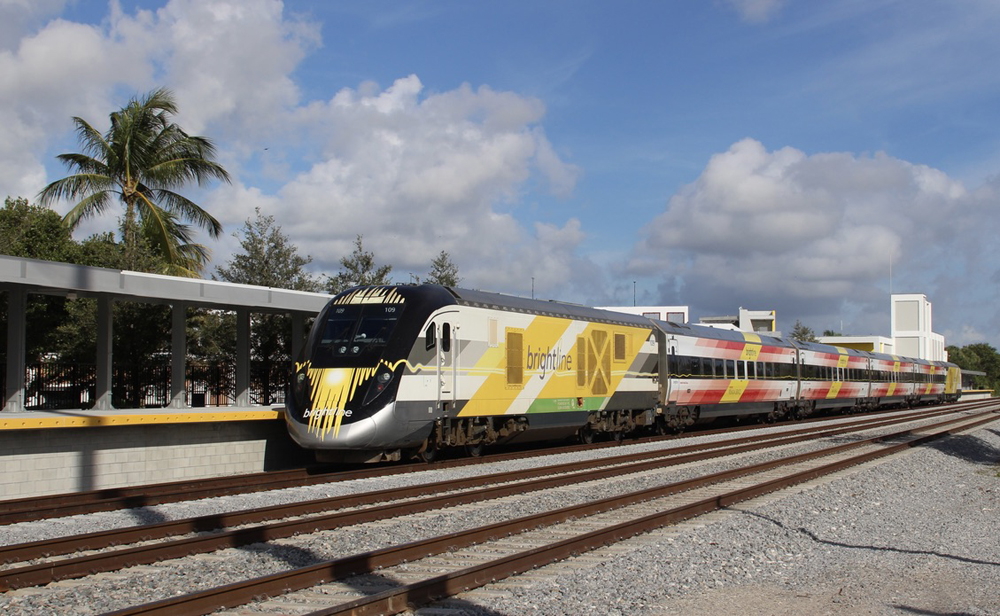The scale-sized locomotive from the early years of the 20th century is a compact 76 scale feet long, or 19 inches, coupler-to-coupler. Its nose is particularly attractive, with a headlight perched high on the smokebox and a round number board beneath. The smokebox door hinges look especially sharp, as does the add-on grab iron.
The locomotive’s pilot is equipped with dummy coupler and an uncoupler bar. The front deck has a cast-in tread pattern, although the running boards down the sides of the boiler are smooth.
The boiler itself has cast-in boiler bands and rivets. Handrails run along the sides of the boiler, and they’re nicely curved just below the markers.
The cab is well appointed, with twin firebox doors, gauges and levers on the backhead, and two crew figures.
In a bit of a surprise, the locomotive uses a wired tether to connect the locomotive and tender instead of Lionel’s wireless system. The tender lacks a backup light, but it does have handrails and a ladder. The water hatches are solid and the coal load is cast-in.
Decoration is minimal: a satin black boiler, silver gray smokebox and firebox, and crisp lettering. The Chicago & North Western logo is sharply done. There also is an attractive builder’s plate on both sides of the smokebox.
The wheels are chemically blackened. While the running gear didn’t strike me as being darkened, it didn’t have that shiny, bare metal look either.
On the test track
In the conventional mode without the locomotive’s Odyssey speed-control circuitry engaged, I clocked the 4-6-0’s low speed at 39.0 scale mph.
Ouch! I was surprised at how fast this steamer ran in conventional mode. It almost seemed to be locked at a preset speed via the Odyssey system. I attempted several times to clear any Odyssey setting, but my efforts had no effect. Running in TrainMaster Command Control mode, however, the steamer was a real cream puff, crawling along at a smooth 6.4 scale mph.
In the conventional mode, the steamer averaged a top speed of 119.4 scale mph, speedy enough for your top express train!
Drawbar pull for the 4-6-0 was a robust 2 pounds, 3 ounces, equal to roughly 105 free-rolling cars.
The locomotive has two pickup rollers placed 3 inches apart, the same for the tender.
The Lionel 4-6-0 is an attractive steamer with good performance numbers except for its conventional-control low speed, which is too high. The engine is scale sized, but it’s not so big that it overwhelms smaller layouts. Being generic in appearance it’s an ideal candidate to add to any pike that models the 1920s through 1950s.













